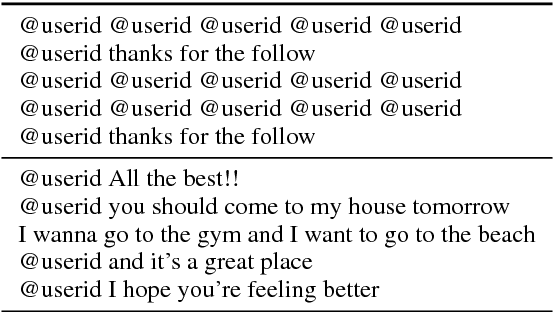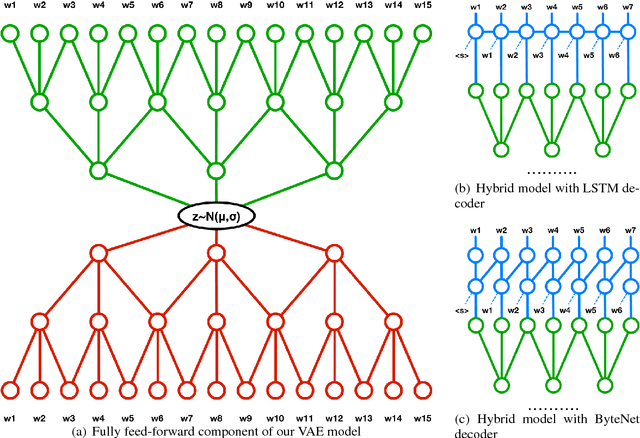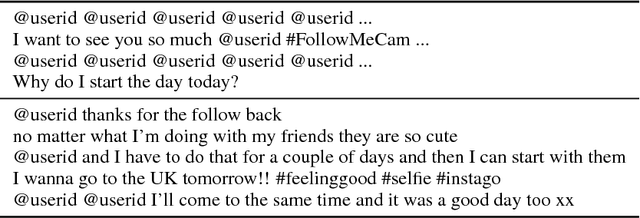A Hybrid Convolutional Variational Autoencoder for Text Generation
Paper and Code
Feb 08, 2017



In this paper we explore the effect of architectural choices on learning a Variational Autoencoder (VAE) for text generation. In contrast to the previously introduced VAE model for text where both the encoder and decoder are RNNs, we propose a novel hybrid architecture that blends fully feed-forward convolutional and deconvolutional components with a recurrent language model. Our architecture exhibits several attractive properties such as faster run time and convergence, ability to better handle long sequences and, more importantly, it helps to avoid some of the major difficulties posed by training VAE models on textual data.
 Add to Chrome
Add to Chrome Add to Firefox
Add to Firefox Add to Edge
Add to Edge